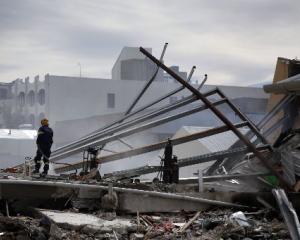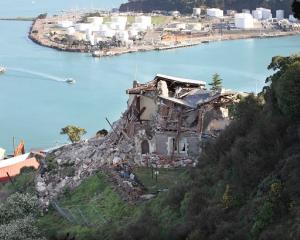Establishing candid and honest lines of communication about damaged buildings is a fundamental first step in lease negotiations between tenants and landlords, Dunedin lawyer Tony Sycamore says.
"The question to the forefront of the minds of many landlords and tenants currently is what happens to a commercial property lease when the building suffers damage from a natural disaster like the Canterbury earthquake.
"The focus for most people will always be the safety of family, friends and work colleagues. But, in the fullness of time ... business and property owners will turn their minds to the issues facing landlords and tenants of damaged commercial properties."
That was always a difficult situation and good faith negotiations based on clear and unemotional communication was critical, Mr Sycamore, a principal of Van Aart Sycamore Lawyers, said.
The most common lease used for commercial premises in New Zealand was the Auckland District Law Society (ADLS) lease.
In the case of other variations or specialised leases, the tenant and landlord needed to carefully consider the issues in light of the terms of their specific lease.
For most, those were not an area in which they had any experience.
"These issues are certainly highlighted by such a catastrophic natural disaster as the Canterbury earthquake."
When the premises had been destroyed by a natural disaster, the lease would be deemed to have been terminated from the date of the disaster.
The tenant was required to notify the landlord of any accident or defect in the premises promptly.
Ideally, photos should be taken as evidence and the date of any damage should be recorded and documented, he said.
The landlord had the right of inspection at all "reasonable times" to view the condition of the premises.
If the lease was deemed to have terminated from the date of the disaster, neither party needed to do anything to confirm it but it was a good option to record the termination in a legal deed to give everyone clarity.
The key concept around determining the landlord and tenants' rights as to a building was "untenantability", he said.
For any buildings or premises not completely destroyed but which had suffered significant damage, the question was whether or not the damage was of significant magnitude to mean that the building could not hold tenants, Mr Sycamore said.
The building must be completely unfit for use by the tenant to be considered untenantable.
"The damage also needs to be more permanent than temporary."
Also, the closure of a building for an engineer's report or other safety inspections will not entitle a tenant to claim termination of an ADLS lease, he said.
The length of the term of the lease, and the likely time to complete repairs, was also relevant to determining whether a building was untenantable.
If a lease had a very long term to run and the building would be repaired within a few months, the lease was unlikely to have terminated.
The ADLS lease also gave the landlord the right to terminate the lease if the damage was going to require demolition of the building or reconstruction.
If the building was damaged but not untenantable, the landlord must use the insurance money to repair the premises to the extent of the insurance payout.
For the period of the repair, the landlord must also make a fair reduction to the rent and outgoings.
"If a permit or consent cannot be obtained, or the insurance is not enough to complete the repairs, then the lease terminates."
If the building was fit for occupation but still partly damaged, the tenant could argue for a partial reduction of rent and outgoings for a period, Mr Sycamore said.
A tenant should start that process as early as possible.






